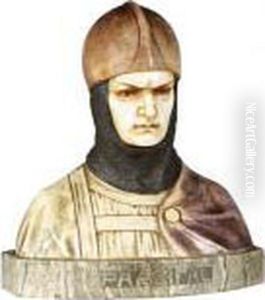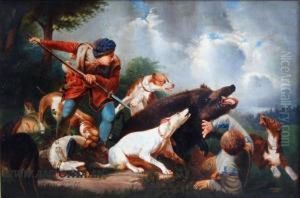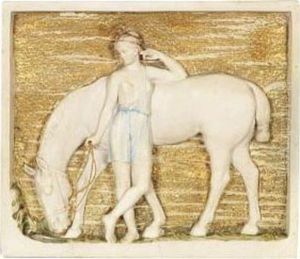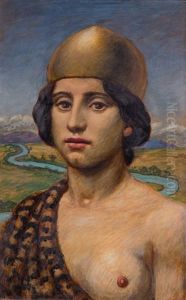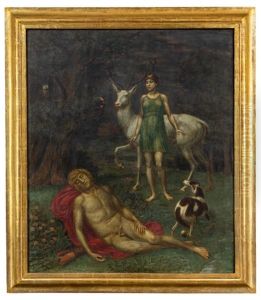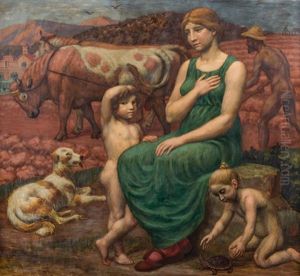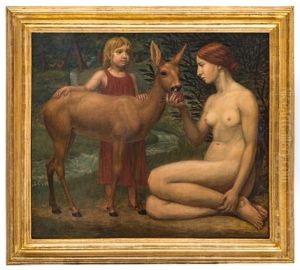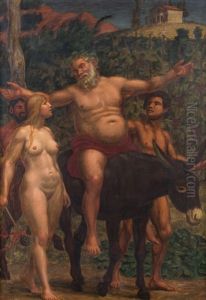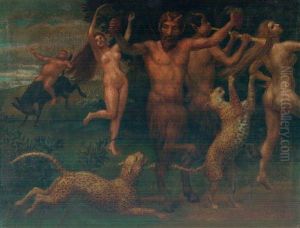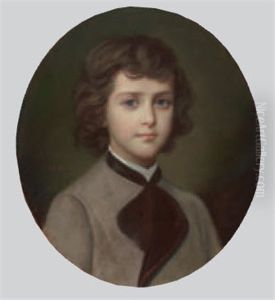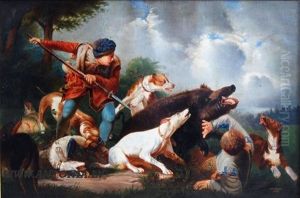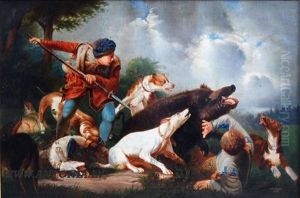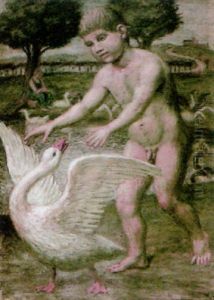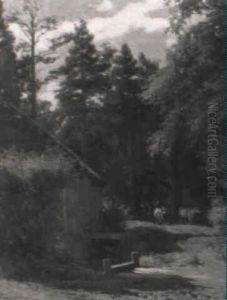Arthur Volkmann Paintings
Arthur Volkmann was a German sculptor and painter, born on July 28, 1851, in Leipzig, Germany. He was part of the late 19th and early 20th-century movement of artists who sought to revitalize German art by returning to classical ideals and forms. His works often depicted mythological or allegorical subjects, and he was known for his ability to infuse his sculptures with a sense of movement and emotional depth.
Volkmann studied at the Leipzig Academy and later at the Prussian Academy of Arts in Berlin. He was influenced by the ideals of the German Renaissance and the works of artists such as Donatello and Luca della Robbia. During his studies, he was inspired by the teachings of various prominent sculptors of the time, which helped shape his approach to sculpture.
In the 1880s, Volkmann traveled to Italy, which was a pivotal experience for his artistic development. The encounter with Italian Renaissance art had a profound impact on him, and he began to incorporate the vitality and naturalism of Renaissance sculpture into his own work. He was particularly drawn to the human form and aimed to capture the beauty and expressiveness of the body in his sculptures.
Volkmann's reputation grew as he exhibited his works at various exhibitions, including the Great Berlin Art Exhibition. His sculptures received critical acclaim and he was commissioned to create several public monuments. He also produced smaller scale works, including busts and statuettes, which were popular with collectors.
Throughout his career, Volkmann taught and influenced a number of younger artists, imparting his classical approach to sculpture. Despite his success, he remained relatively conservative in his artistic style, even as the art world around him underwent dramatic changes with the advent of modernism.
Arthur Volkmann died on October 18, 1941, in Halle, Germany. His legacy is that of a dedicated sculptor who strove to celebrate the human form through his classical approach to art. Although his name may not be as widely recognized as some of his contemporaries, his work remains an important part of the artistic heritage of Germany and continues to be studied and appreciated for its craftsmanship and beauty.
